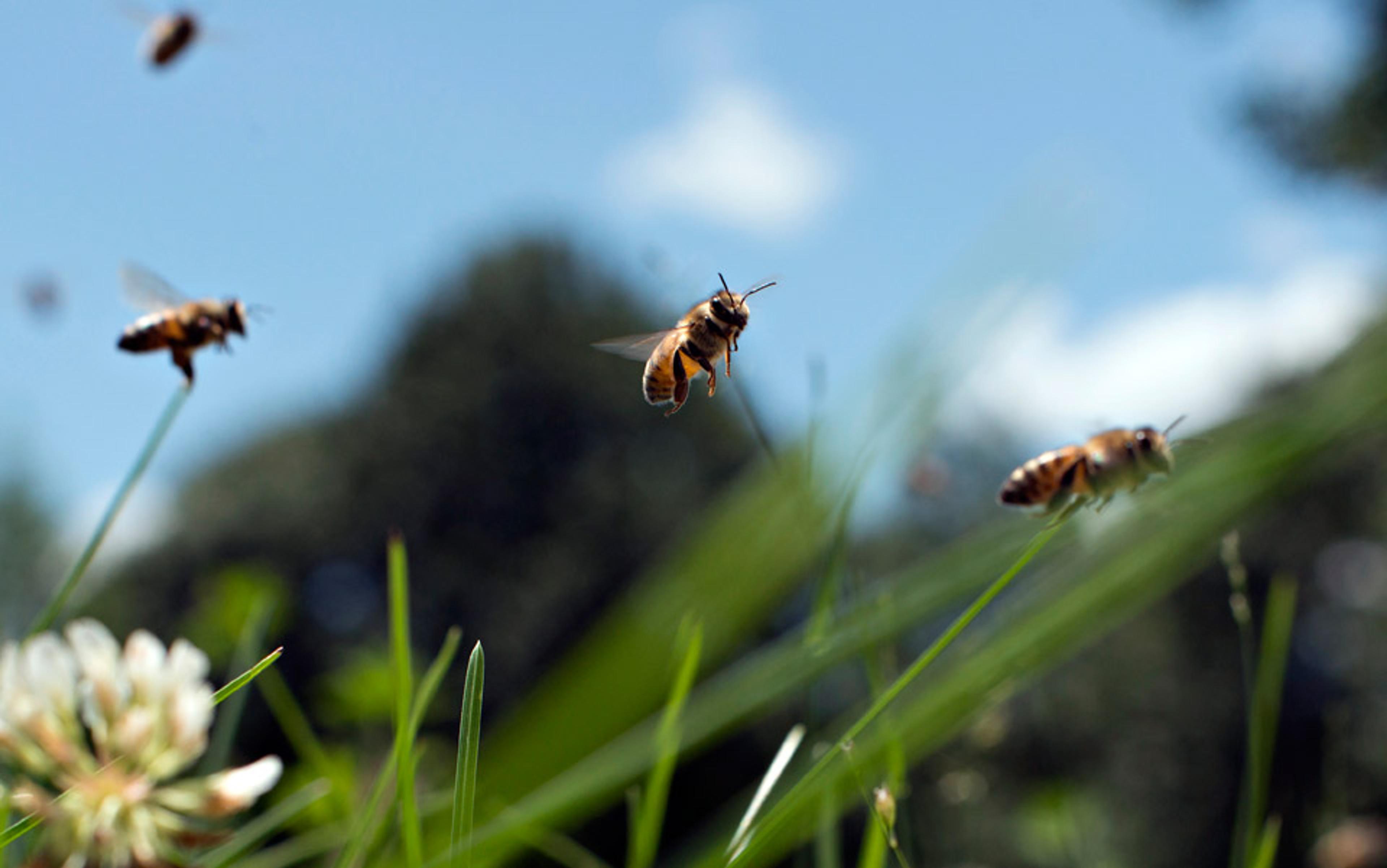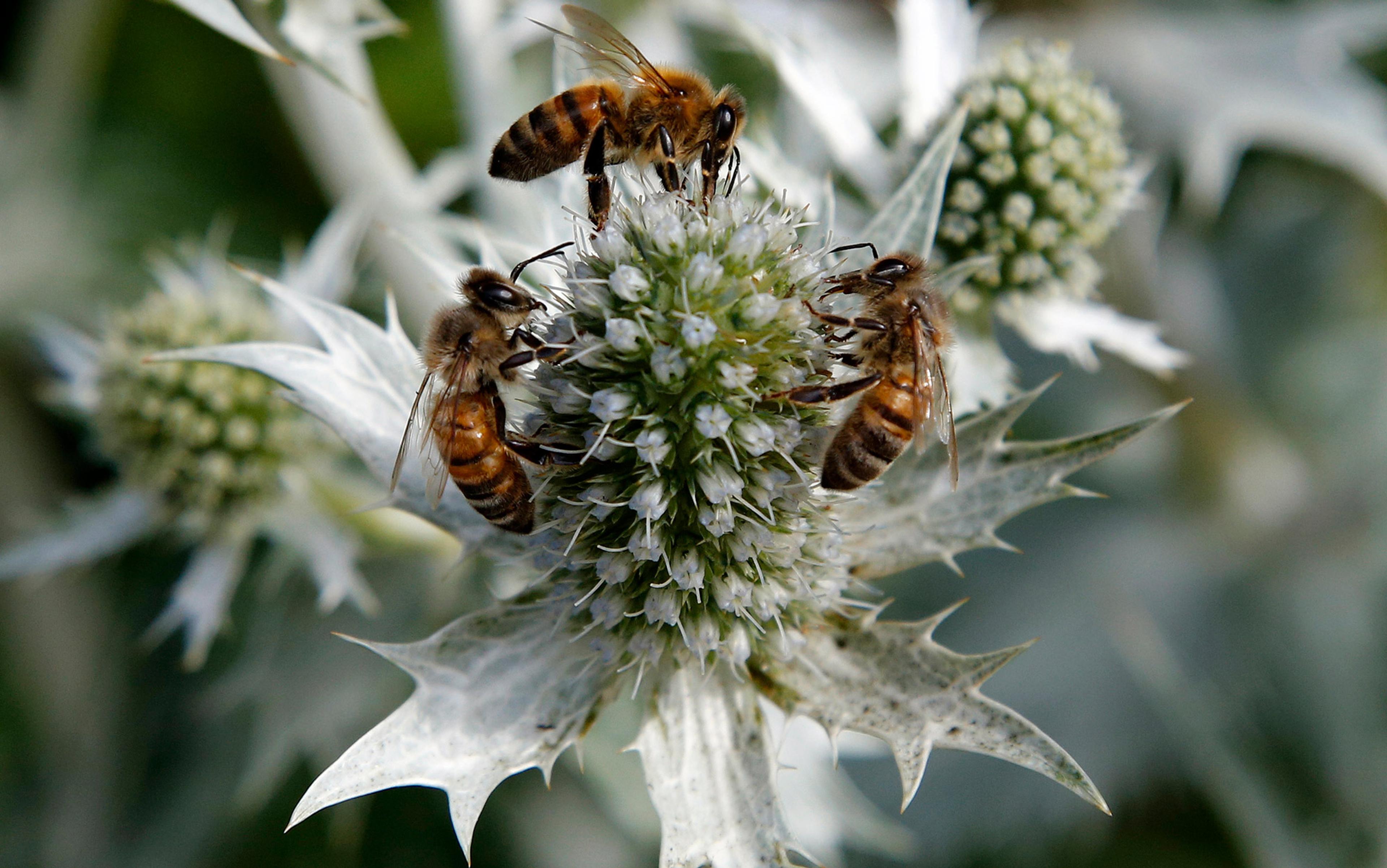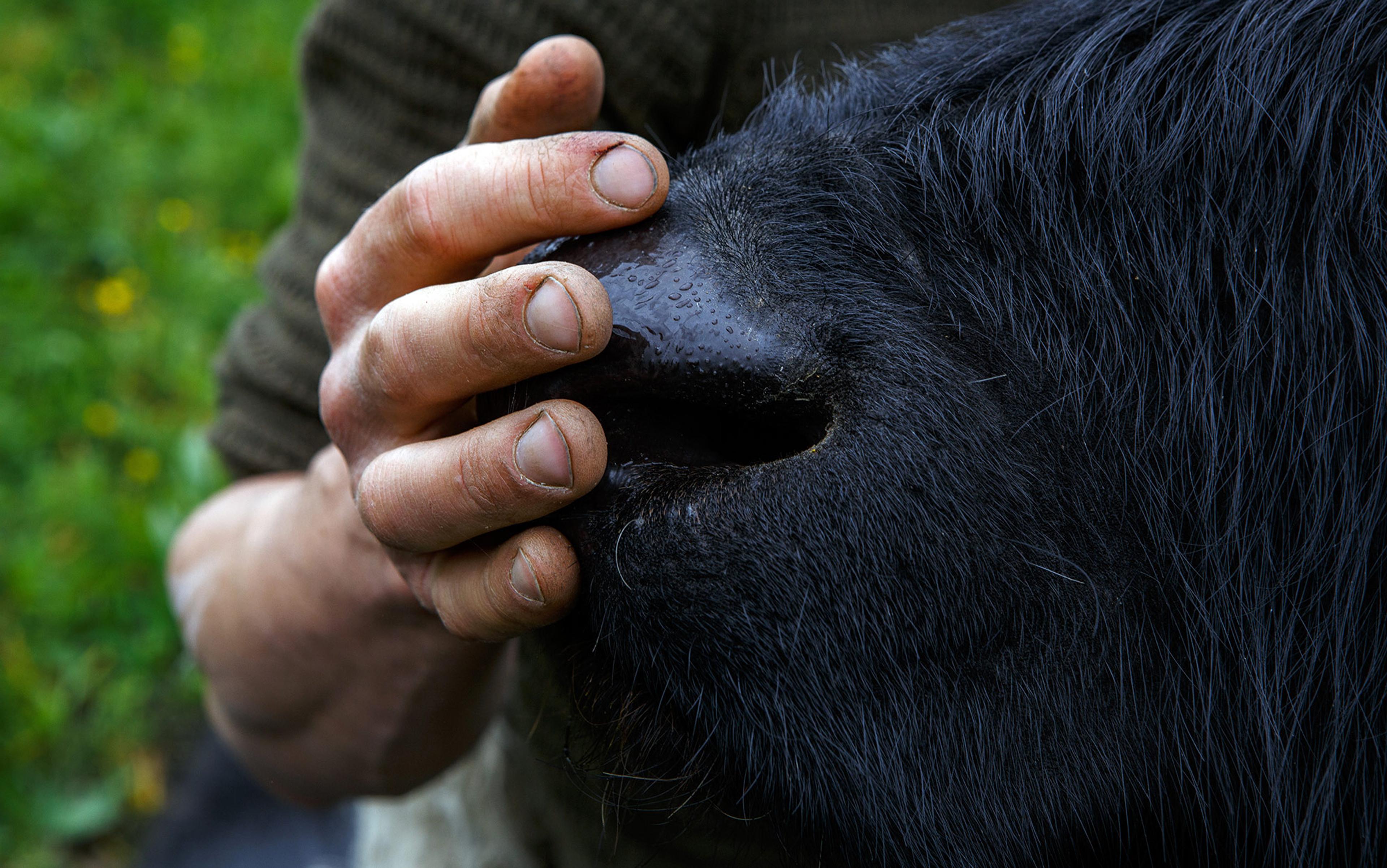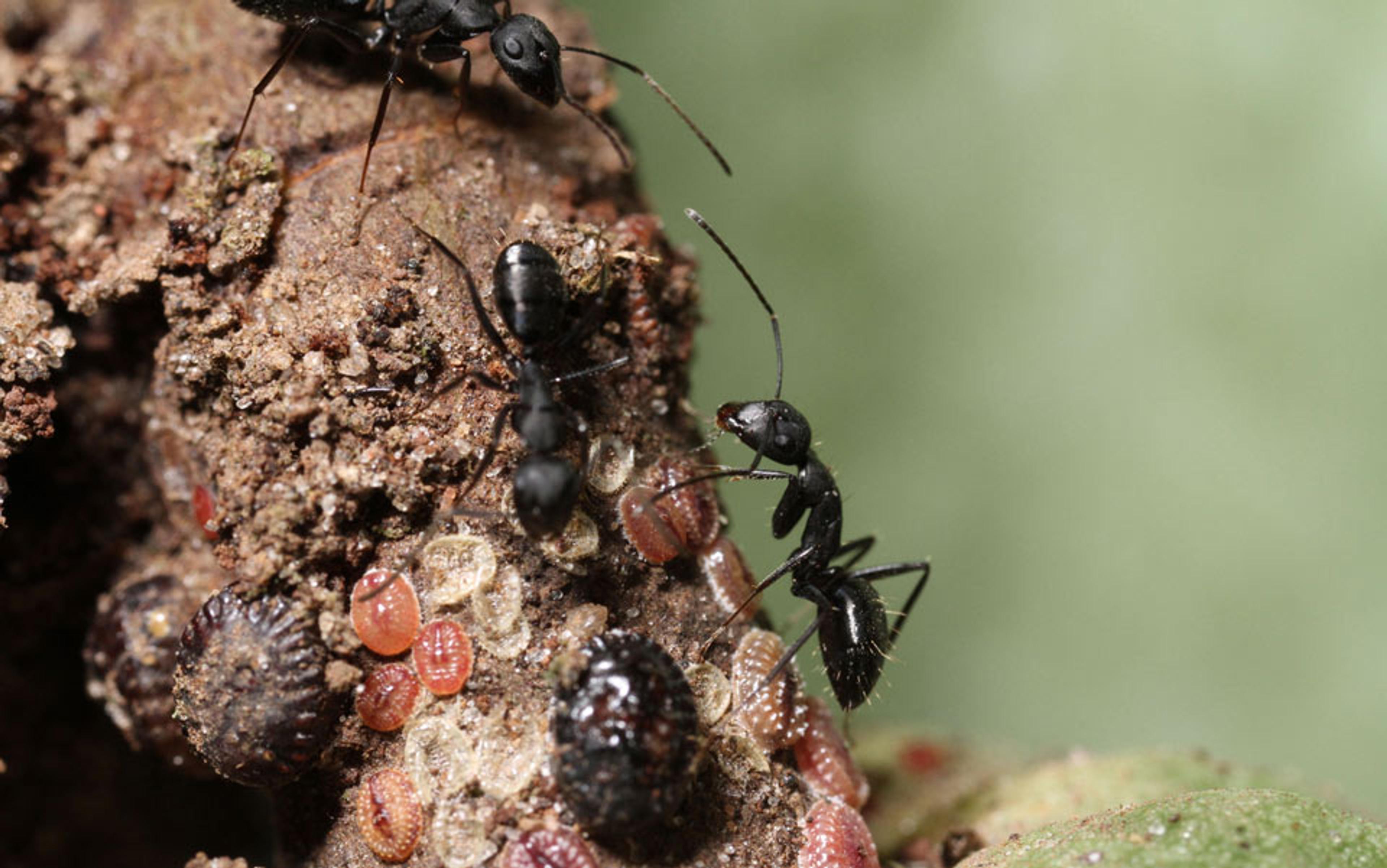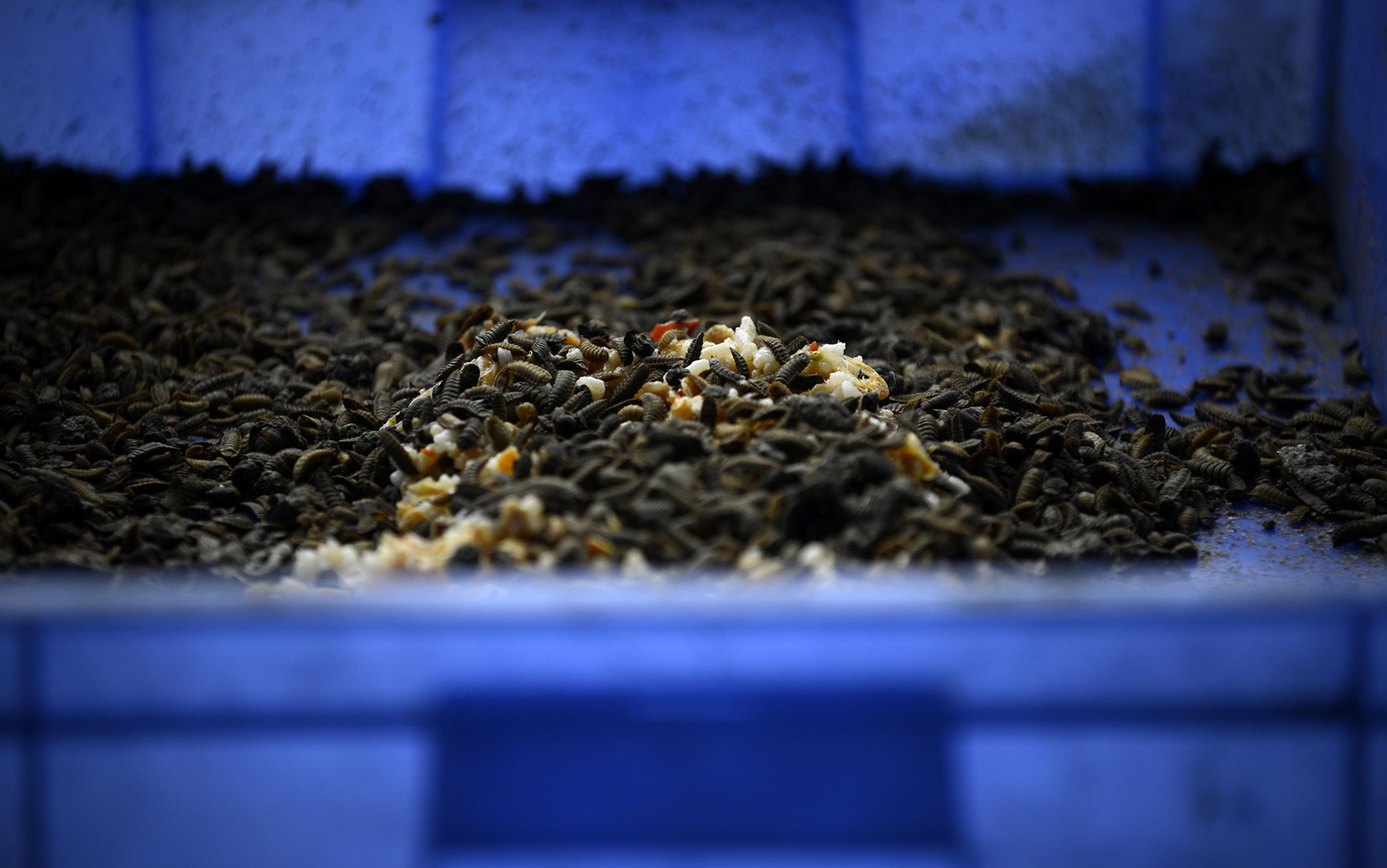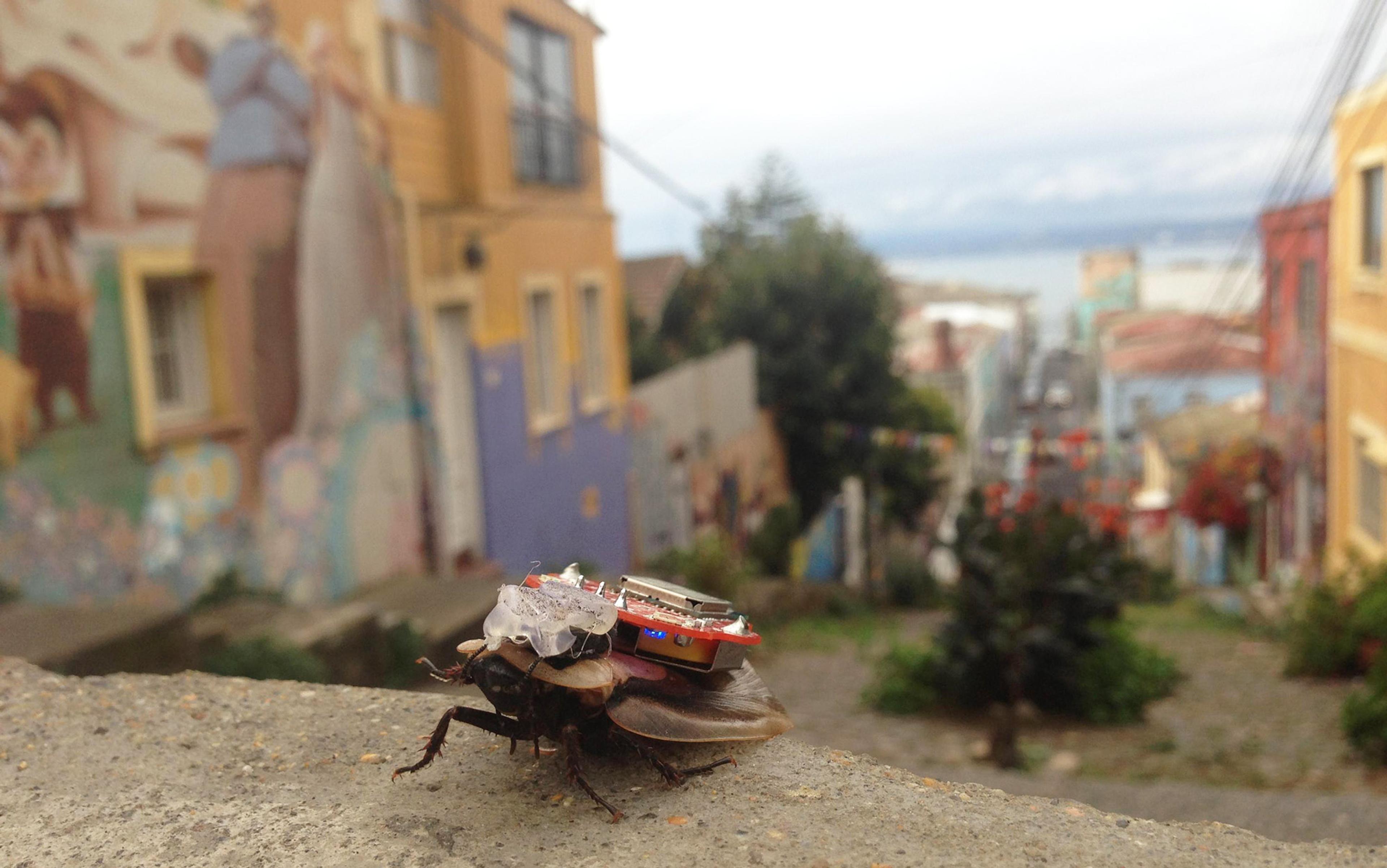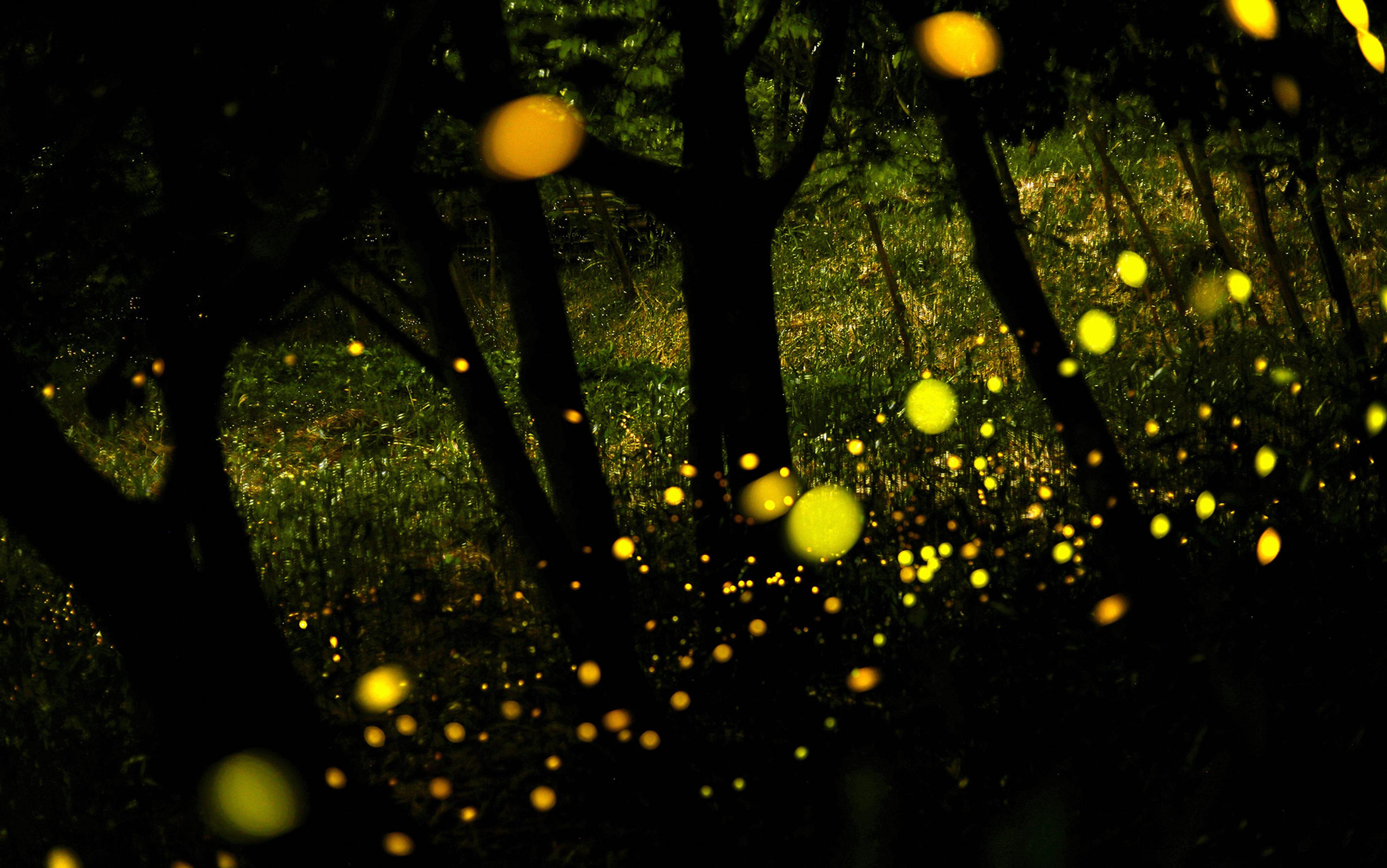It was a warm day in early spring when I had my first long conversation with the entomologist and science studies scholar Sainath Suryanarayanan. We met over a couple of hives I had recently inherited. One was thriving. Piles of dead bees filled the other. Parts of the comb were covered with mould and oozing something that looked like molasses.
Having recently attended a class for hobby beekeepers with Marla Spivak, an entomologist at the University of Minnesota, I was aware of the many different diseases to which bees are susceptible. American foulbrood, which was a mean one, concerned me most. Beekeepers recommended burning all of your equipment if you discovered it in your hives. Some of these bees were alive, but obviously in low spirits, and I didn’t want to destroy them unnecessarily. I called Sainath because I thought he could help me with the diagnosis.
Beekeeping, these days, is riddled with risks. New viruses, habitat loss, pesticides and mites all contribute to creating a deadly labyrinth through which nearly every bee must travel. Additionally, in 2004, mysterious bee disappearances began to plague thousands of beekeepers. Seemingly healthy bees started abandoning their homes. This strange disappearing act became known as colony collapse disorder (CCD).
Since then, the world has seen the decline of many other pollinating species, too. Because honeybees and other pollinators are responsible for pollinating at least one-third of all the food we eat, this is a serious problem globally. Diagnosing bee problems is not simple, but some answers are emerging. A ubiquitous class of pesticides called neonicotinoids have been implicated in pollinator decline, which has fuelled conversations among beekeepers, scientists, policy-makers and growers. A beekeeper facing a failing hive now has to consider not only the health of the hive itself, but also the health of the landscape around the hive. Dead bees lead beekeepers down a path of many questions. And some beekeepers have lost so many hives, they feel like giving up.
When we met at my troubled hives, Sainath brought his own hive tool and veil. He had already been down a path of many questions about bee deaths, one that started in his youth with a fascination for observing insects. When he was 14, he began his ‘Amateur Entomologist’s Record’, where he kept taxonomic notes on such things as wing textures, body shapes, colour patterns and behaviours. But the young scientist’s approach occasionally slipped to include his exuberance, describing one moment as ‘a stupefying experience!’ All this led him to study biology and chemistry in college, then to work on the behavioural ecology of paper wasps during his doctoral studies, and eventually to Minnesota to help Spivak investigate the role of pesticides in CCD.
Sainath had spent several years doing lab and field experiments with wasps and bees, but ultimately wanted to shift from traditional practices in entomology to research that included human/insect relationships. It was Sainath who made me wonder about the role of emotion in science – both in the scientists themselves and in the subjects of their experiments. I had always thought of emotion as something excised from science, but this was impossible for some scientists. What was the role of empathy in experimentation? How do we, with our human limitations, understand something as radically different from us as the honeybee? Did bees have feelings, too? If so, what did that mean for the scientist? For the science?
Sainath’s gentle demeanour and velvet voice seemed to be balm to the bees, and to me, too. We cracked open the dead hive and were immediately engulfed in the smell of death. Even before we could see the bee bodies, it was clear that there was something terribly wrong with this hive. Beehives usually have an intoxicating smell. The reason for this might be obvious: the honey, beeswax and other products of creatures trafficking in nectar and pollen is likely to smell as good as the flowers they frequent.
The piles of decaying bee carcasses in my hive clearly indicated something out of balance
But there’s another reason the hives smell good: bees are also great housekeepers. When they first emerge from their wax cells, bees begin their lives doing the work of hive maintenance. They patch holes with propolis, a resinous substance they harvest from certain trees, repair damaged comb with wax, and drag tiny unwanted objects – dirt, twigs, dead bees or other insects – out of the hive through the main entrance. This is the reason there will often be a few dead bees at the front of even a very healthy hive. When an object is too large or difficult for a bee to remove, she will encase the object in propolis to keep it from polluting their sacred space.
The piles of decaying bee carcasses in my hive clearly indicated something out of balance. The surviving bees seemed to be in mourning. Sainath and I began clearing away the debris of the devastated city.
We took the hive apart, frame by frame, and decided that it didn’t actually look like American foulbrood after all. Instead, we found more mould, which we thought might have been caused by water that had leaked into the hive. Could it have been a leaky feeder? In a climate like ours in the midwestern part of the United States, beekeepers often feed their bees in early spring before blossoms are open with something called ‘spring syrup’, a concoction made of sugar and water. One way to feed bees this syrup is to puncture the top of a ball jar with holes and then place the jar inside the hive upside down. If the jar is not resting evenly or the holes are too large, it can seep out more quickly than the bees can drink it up, and the result is a wet hive. Very little of this hive could be salvaged.
A year or so after examining my damaged hive, Sainath and I met to talk about the suffering of the bees. He began by telling me about his work with paper wasps. His research proved that socially dominant female wasps participate in a drumming behaviour to create a nest vibration that altered the development of baby wasps. He held an imaginary pipette between his thumb and his middle finger. To track their development, he said: ‘We had to puncture the bodies of the live babies and suck their blood like this.’ He held the imaginary pipette to his mouth, puckered his lips, and inhaled. His finger capped the end and carried the blood to a vial. ‘Over and over we did this, and then the dreams began.’ His dark eyes darted to the floor, and he furrowed his brow. ‘Yes, they suffer.’
The 17th-century French philosopher René Descartes suggested that animals are like machines and do not have thought. For many years, attributing any kind of emotion or consciousness to an animal was widely ridiculed. Lorraine Daston and Gregg Mitman, both award-winning contemporary historians of science, summarise this fear of anthropomorphism in the introduction to their book, Thinking with Animals (2005): ‘“Anthropomorphism” is the word used to describe the belief that animals are essentially like humans, and it is usually applied as a term of reproach, both intellectual and moral.’ Anthropomorphising has been seen as bad, sloppy thinking, an assumption the Daston and Mitman seek to overturn.
‘Their long antennae caressing each other – their feet and tongues touching. Yes, they do. They suffer.’
Marc Bekoff, an animal ethologist at the University of Colorado, Boulder, has spent his career in this pursuit. ‘Many animals experience pain, anxiety and suffering, physically and psychologically, when they are held in captivity or subjected to starvation, social isolation, physical restraint, or painful situations from which they cannot escape,’ he notes in his book Animals Matter (2007). Elephants exhibit a form of post-traumatic stress disorder upon seeing other elephants violently killed, he points out. Whales and primates show compassion. There are interspecies friendships between such strange mates as a snake and a hamster. And even Magpies mourn.
But could insects feel emotional angst? Sainath and I leant forward into our quiet voices and the small circle of intimacy created by our shared knowledge that many would find blasphemous. ‘I didn’t prove it, scientifically,’ he said, ‘but I could feel it. Of course they suffer. Their long antennae caressing each other – their feet and tongues touching. Yes, they do. They suffer.’
I felt a tightness in my chest as I imagined my own honeybees, their bird-like faces, the soft yellow hair on their abdomens, the tentative way they explored my hands. The way they touched each other with so much tenderness. I could not imagine piercing the belly of a live bee with a scalpel, watching it struggle and flail its arms. Torturing insects was something I knew some children did, but I had not been one of them.
Anyone who has observed bees would surely intuit their incredible sensitivity to touch, but a few years ago the animal behaviour researchers Mariana Gil and Rodrigo J De Marco from the Institute for Biology and Neurobiology in Berlin wanted to prove something more. They wanted to show that bees communicate cartographic information – including the distance to a nectar source or the location of a new potential hive – through touch.
The team began by looking at the waggle dance of the honeybee, first decoded in 1965 by the ethnologist and later Nobel prizewinner Karl von Frisch. Von Frisch had shown that bees dance a map: direction (left, down, sideways) was encoded by calibrating the dance to the azimuth of the Sun. The length of travel was encoded in the distance of the dance itself. But how did those following the waggle dance catch on? In 2010, using high-speed video, Gil and De Marco found that most followers faced the dancing bees head-on, picking up wagging movements with their antennae. A smaller group of followers faced the dancers from behind, detecting an alternate pattern from the dance. Either way, the more wagging, the more antennal deflection, with all that tactile information presumably sent to the brain.
But what is that experience of touch really like for bees? Does it translate to something like human pain or emotion? Over the years, at my own hives, I have sensed moods, certainly. The bees in the hive that Sainath and I opened together seemed to lack vigour and – dare I say – hope. We decided to destroy the blackened frames, just in case, by fire. But there were survivors. I put those bees on clean frames and their energy lifted.
Within a week or so, I realised something was still amiss because their energy seemed frenetic. When I checked the frames, I found no eggs and no baby queen cells, which meant there was no queen present or soon to be born. A queen is essential because she is the mother of all the new workers in the hive. She lays, on average, 1,000 to 2,000 eggs a day. Without a queen, the hive would die.
worker bees surrounded the queen like petals of a sunflower and began stroking and grooming her
I quickly called some beekeepers to see if anyone had any queens left and luckily a friend of a friend was able to send one to Wisconsin from Florida. She and her small entourage of attendant workers arrived via express mail in a small makeshift box with sides made out of screen. The queen herself had her own compartment, a wooden box about the length of my thumb which had a screen on one side and a small hole filled with a piece of hard candy at the end, an edible barrier. Her attendants were clustered around her in a lump about the size of my hands clasped together.
When you re-queen a hive, there is always a chance that the bees will reject the new queen and kill her. The way to avoid this is to place the new queen in her tiny compartment inside the hive for at least a day or two so that the bees will grow accustomed to her pheromones before you release her. I placed the tiny container inside the hive, whispered a few words of introduction to the struggling community, closed up the hive, and crossed my fingers. A day later, I pried off the hive cover, carefully pulled back the screen wall of the queen’s chamber and released her into the hive. Immediately, seven or eight workers surrounded her like petals of a sunflower and began stroking and grooming her, and I felt a wave of relief. Within a few days, I perceived the mood of the hive to be calm, happy and busy, at last.
But could bees truly be buffeted by moods in a human-like way? Recent research suggests they can. That work, led by the zoologist Melissa Bateson at Newcastle University, set out to determine whether honeybees could exhibit something akin to pessimism in the face of ambiguity. First, the bees were trained to recognise the ‘positive’ scent of sweet sucrose, associated with reward, and the ‘negative’ scent of bitter quinine, associated with punishment. Then they were captured and slipped into tiny tube-like harnesses, which kept their wings from moving while their heads stuck out the end.
Bateson and her team watched the faces of the bees very carefully. A bee that smells the scent associated with a reward sticks out her tongue. A bee that smells the scent associated with bitterness retracts her mouth-parts. This response is so reliable that bees trained in this manner can be used to detect drugs or explosives.
The scientists at Newcastle wanted to know if stress would affect the bees’ mood, so they vigorously shook one group of bees to simulate an invasion into the hive. The bees, it turns out, were not just physically but also psychologically shaken. Not only did they exhibit lower levels of serotonin and dopamine, they also became pessimistic in their responses, anticipating that samples would be bitter instead of sweet, amounting to punishment, as indicated by expression of the face.
The pessimistic reaction, seen as an emotional response to stress, thrilled the researchers. ‘We show that the bees’ response to a negatively valenced event has more in common with that of vertebrates than previously thought,’ the team wrote in Current Biology in 2011. The finding suggests ‘that honeybees could be regarded as exhibiting emotions’.
None of this proves that honeybees experience pain, emotional or physical, similar to human pain. There is no way for us to know that, and what would it matter if we did? Historically, acknowledgement that certain animals (particularly certain mammals) experience pain has given rise to animal rights movements and anti-cruelty laws. Although guidelines become more flexible in the lab, where the animal is a tool for science, a means to an end, scientists must follow humane protocols for handling and killing vertebrates.
But invertebrates such as bees fall outside the umbrella of these ethics in the lab, where researchers see them as tools meant for sacrifice. The great irony is that the researchers themselves might need to shut down their own emotions and their sense of compassion to continue working. How do they separate themselves?
He continued to dream about drawing blood from the brood and would often wake up gagging
To answer the question, it might first be worth looking at researchers whose work includes studying or preserving animals in the wild. Daston and Mitman say that such investigators ‘develop deep identifications with their chosen subjects’, adding that the ‘arduous life of the observer in the wild would hardly be tolerable without some such emotional bond’.
So what does a scientist do with this kind of feeling when hurting or sacrificing animals, even insects, in the lab? For Sainath, the suffering he caused the wasps created immense suffering for himself. His visceral nightmares grew worse and worse. He continued to dream about drawing blood from the brood and would often wake up gagging.
His work with Spivak’s team of entomologists at the Bee Lab at the University of Minnesota proved arduous, too. Charged with testing pesticides, especially imidacloprid (one of the neonicotinoid-class pesticides), he spent nine hours a day checking the health of bees, looking for changes in behaviour and brood-development pattern; and nine hours a day he slowly poisoned the bees as well. The US Environment Protection Agency wanted evidence, proof of chronic toxicity of imidacloprid in beehives. ‘That meant we had to kill them,’ said Sainath. ‘They became sick and grew sicker and sicker until they would finally die.’ The sugar syrup and pollen substitutes that Sainath fed the bees were laced with the pesticide in progressively higher doses. ‘Marla [Spivak] and I were uneasy about poisoning the beehives.’ It was not only wrong to be slowly killing them, but it did not represent the way bees would encounter the pesticide in their real lives.
The testing was based on a toxicity standard called an LD50 (lethal dose 50 per cent) which was measured by the amount of a chemical the bees could take before 50 per cent of those exposed died. What became increasingly clear to Sainath was that focusing on how much of one chemical it takes to kill a bee was not good enough. The research had failed to parse other, interacting factors – synthetic chemicals, pathogens, and nutrition, to name just a few. It did not delve into far smaller pesticide doses that could, over time, impact the bee brain and its ability to sense and navigate the world.
And most especially, the studies did not detail the myriad human/honeybee entanglements – a vast oversight when we ourselves, the beekeepers and growers and all our systems, were enmeshed in the bees’ decline. The chemical regimes of industrial agriculture were deeply entrenched and highly complex, and the movement of millions of hives for pollination of monocrops, leading to the loss of wildflower habitats, represented an associated, connected loss we had to account for as well.
To understand these issues, wouldn’t it be smart to spend time with beekeepers, asked Sainath and his colleague, the environmental sociologist Daniel Kleinman at the University of Wisconsin. Beekeepers gain knowledge of bees through their daily interactions. They are emotionally connected to bees. They know things others might not. For example, beekeepers with decades of experience had long noticed that bees were not doing well after their contact with neonicotinoid pesticides, even as chemical companies claimed those pesticides were safe. Wouldn’t beekeepers themselves offer unique and intimate insight into CCD?
How might a beekeeper, who understands when bees are visiting which flowers, help to refine study design?
In September 2013, Sainath and Kleinman launched a ‘transdisciplinary inquiry’ funded by the US National Science Foundation involving the range of stakeholders on the ground – entomologists, ecologists, beekeepers, growers, government representatives and humanitarians. In collaboration, they will design experiments to save bees without tormenting them. In one approach, they’ll study beehives in a variety of landscapes with varying amounts of pesticides, and then sample pollen to see which communities are most effective, and why.
How might a beekeeper, who understands when bees are visiting which flowers, help to refine study design? How can the knowledge of an ecologist help to interpret those findings? How could a grower, who knows the timing and methods of chemical applications, help to analyse these results? The conversations will eventually – hopefully – affect policy and future research.
This summer was the first season of Sainath’s alternative approach to bees, starting by observing them in the landscapes in which they lived. As a research assistant to Sainath and his diverse team, I visited bees living at the edges of meadows full of wildflowers and hives nestled on the edges of corn crops and vegetable fields. We spent time talking to farmers and beekeepers about their habits, approaches and concerns.
The life of the honeybee cannot be divorced from the humans who work with them, count on them, love them. We opened hives and took note of their activities and their health. As we lifted the frames, Sainath whispered soothing words to the bees. As with his old work, the new approach engages complex emotions, but the nightmares are gone.
